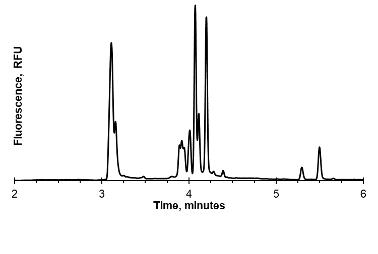Chemistry and Biochemistry
Saylor Lab
Research in the Saylor Lab
The brain is a complex and delicate organ whose dysregulation leads to many diseases and disorders, including anxiety, depression, Parkinson’s, and Alzheimer’s diseases. Our understanding of these disorders - and any peripheral and environmental factors that affect them - is limited by a lack of model systems and analytical tools to investigate dynamic processes in the brain. The Saylor lab therefore aims to develop and employ novel analytical methods to investigate neurobiological problems.
View Assistant Professor Rachel Saylor's faculty bio.
Fluorescence is an extremely sensitive technique that can enable detection of small quantities of analytes in complex samples. Many reaction schemes exist to transform natively non-fluorescent molecules, including primary amine neurotransmitters, into those that do fluoresce and are therefore more easily detected. This project employs a combination of analytical and computational techniques to investigate these reactions, with the goals of uncovering limitations and improving the resulting fluorescence for primary amine neurotransmitters implicated in neurobiological disorders.

Many biological and neurological processes involve an intricate interplay of small molecules; unfortunately, these analytes are often present in highly complex, small volume samples and at low concentrations, making analysis difficult. Capillary electrophoresis and laser-induced fluorescence are two powerful analytical techniques that when combined can overcome these analytical challenges. Through careful consideration and optimization of separation conditions, many similar analytes can be quantified, simultaneously, in a single sample. In this project, a method employing capillary electrophoresis with laser-induced fluorescence detection is being developed and optimized to simultaneously detect multiple neurotransmitters present in models of neurological disorders.
